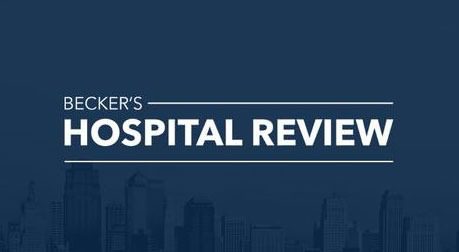
Health systems strategic plans adjust to ‘new financial realities’ – Becker’s Hospital Review | Healthcare News
Hospital strategic planning is getting harder.
It was common for health systems to have three to five year strategic plans pre-2020. The pandemic forced executive teams to plan on shorter horizons, weeks and months out versus years as COVID-19, then economic challenges, then artificial intelligence-driven technologies changed healthcare operations and delivery at a rapid pace.
When 2025 began, Becker’s heard from several health system executives that they were developing three-to-five year plans again, some even setting 10-year strategies. But six months into the year, times have changed. The One Big Beautiful Bill Act, tariffs, healthcare research funding cuts, upheaval at HHS and more have sent executive teams back to the drawing board.
Mary N. Mannix, president and CEO of Augusta Health in Fisherville, Va., is focused on creating a detailed long-range financial forecast in the second half of the year to understand how the One Big Beautiful Bill Act will affect the organization’s financial health over the next five years.
“We need to be clear on the materiality of these cuts and the tangential consequences, such as losing eligibility to participate in the 340B program, which allowed us to enhance community access to care through the provision of safety net services to the region, such as our comprehensive mobile clinic,” she said. “The second initiative is to marry our newly approved five year strategic plan, ‘Care Reimagined’, with our new financial realities. The tactics for this strategic plan will need to be evaluated and closely contemplated each step along the way.”
Augusta Health will remain focused on improving community health and access to care alongside its commitment to maintaining a thriving workforce despite policy changes. Ms. Mannix and her team are also eyeing future key service line expansion and innovation. But the path to transformation is getting rockier.
“These pursuits will need to be planned and executed in the reality of our impending Medicaid cuts and increased uncompensated care,” she said. “At a more macro level, Augusta Health intends to work closely with our state and federal trade associations and legislators on this path forward.”
Allina Health’s leadership team is in a similar position. Doug Watson, executive vice president and CFO of the Minneapolis-based system said he’s focused on transforming the cost structure to support performance improvement. As inflation rises faster than revenue, Allina, along with many other health systems, is finding creative ways to bridge the gap.
“It just costs more to provide what our teams need, and we need to spend more to get the medications and innovative technologies that our patients require,” said Mr. Watson. “We’re all working to find ways to reduce those costs in a more sustainable way and improve efficiency and effectiveness so we can continue to provide expert care for many more years.”
The One Big Beautiful Bill Act is also on Mr. Watson’s mind, especially pending Medicaid cuts. The legislation narrows qualifications for Medicaid recipients and removes direct payments, which support many hospitals caring for this vulnerable population. While the tightened rules don’t go into effect for two years, they are expected to increase the number of uninsured people. Mr. Watson is concerned the Medicaid changes will limit access to care for patients and impact the system financially.
“The ability to maintain current healthcare services and infrastructure in our area will be seriously challenged with drastic cuts to Medicaid,” he said. “The impact will be felt by all Minnesotans and Wisconsinites, regardless of whether they are on Medicaid or not, and will remain a key point of focus for us not only for the rest of 2025, but also for the coming years.”
The ongoing potential for tariffs and supply chain disruption adds difficulty to future financial projections. CFOs and their financial teams are digging deep into the details of every purchase to understand where products, and even product parts, are manufactured so they can calculate the potential impact of tariffs on imports from each country.
Bob Sehring, CEO of OSF HealthCare in Peoria, Ill., said he is “keeping a close eye on the impact of price increases and supply disruptions due to tariffs. Additionally, OSF HealthCare will continue to focus on innovations in the coming months, especially the rapidly evolving space of AI and the positive impact that can have on productivity.”
Health system C-suites are fortifying their organizations by doubling down on financial stewardship and resiliency. Leaders see the constant shifts and quick pivots as necessary for any upcoming leaders to thrive. Lisa Goodlett, senior vice president, CFO and treasurer of Duke University Health System in Durham, N.C., said the system is focused on exceptional patient care and supporting team members amid challenges.
“We recognize that we are at a pivotal moment: To ensure long-term sustainability and value, we are taking bold, deliberate steps to enhance operational efficiency and build a more cost-effective operational structure,” she said. “During the next four months, we are mapping out a focused plan, in collaboration with all of our stakeholders, to find 7% to 12% in costs, an essential move which will strengthen our ability to deliver our missions and prepare for the future.”
Joe Gaylord, executive vice president and CFO of Fairview in Minneapolis is focused on sustaining current financial and operational momentum while also investing in the workforce. He preaches discipline on labor, length of stay and total cost of care to serve patients more effectively.
“At the same time, we’re focused on scaling high impact innovations like hospital-at-home and specialty pharmacy, which create long-term value and help us deliver care more efficiently,” he said. “Everything we’re doing is about making sure Fairview stays resilient and ready for whatever challenges come next.”



